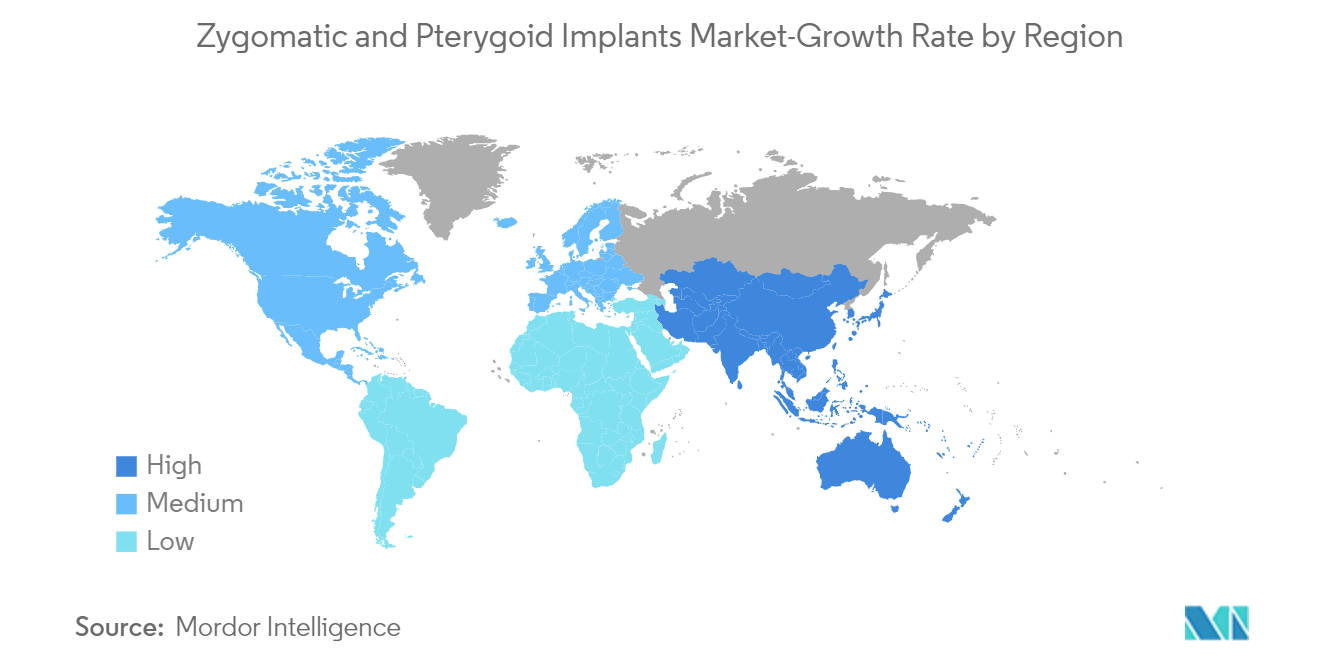Market Trends of Zygomatic and Pterygoid Implants Industry
The Severe Atrophy of Maxillary Bone Segment is Expected to Hold a Major Share by Application in the Market
The severe atrophy of the maxillary bone segment is expected to hold a significant market share. Bone atrophy, or jaw osteonecrosis, occurs when the underlying jawbone deteriorates. The factors contributing to the segment's growth are the increasing incidences of severe atrophy of the maxillary bone, the growing geriatric population, and the implementation of strategic initiatives by the market players. For instance, according to World Population Aging Highlight United Nations 2022, in 2022, there were 771 million people aged 65 years or over globally in 2021, and the older population is projected to reach 994 million by 2030. As the aging population is prone to suffering from dental ailments such as maxillary resorption and increased bone loss, the demand for zygomatic and pterygoid implants is expected to grow with the growing geriatric population.
Furthermore, as per a January 2021 published article by the National Library of Medicine, zygomatic implants appear to offer a promising alternative to formal bone grafting techniques with lower costs, fewer complications, less morbidity, shorter treatment times, and comparably high survival rates, such studies reflect the growing demand for zygomatic implants for severe atrophy of the maxilla, thereby contributing to the segment's growth. Additionally, according to an article published by Acta Odontologica Scandinavica, in December 2021, patients rehabilitated with zygomatic implant-supported complete dental prostheses showed substantial improvements in Oral health-related quality of life and general satisfaction with the treatment received by patients with severe maxillary bone atrophy. Such studies indicate the advantages of pterygoid implants, which lead to growing adoption, thus driving the market's growth over the forecast period. Hence, the segment is expected to grow significantly over the forecast period due to the abovementioned factors.

Europe is Expected to Hold a Significant Share in the Market Over the Forecast Period
Europe is expected to hold a significant market share in the global zygomatic and pterygoid implants market due to the increase in the geriatric population leading to a rise in incidence rates of dental ailments & injuries and the advantage of zygomatic implant procedures for rehabilitation of resorbed maxillary bone. For instance, according to the 2022 statistics published by the United Nations Population Fund, Germany, the United Kingdom, France, and Italy estimated 22%, 19%, 21%, and 24% of the population, respectively, will be aged 65 years and above in 2022. Likewise, according to the European Federation of Periodontology, periodontal diseases are the most common conditions in Europe. Eight out of ten individuals aged over 35 years of age suffer from gum diseases. In addition, periodontal diseases represent a significant cause of expenditure in the adult and geriatric population. Therefore, an increase in dental disease in the geriatric population is expected to drive the market.
The research studies suggest that effective treatment with zygomatic and pterygoid implants also propels the market's growth. For instance, an article published by the National Library of Medicine in June 2021 stated that zygomatic and pterygoid implants had been suggested to rehabilitate severely resorbed maxillary bone in Europe. It also indicated that further research on the accuracy of the entire procedure is mandatory to avoid critical surgical complications, which can involve accidents to the surrounding anatomy. Such an advantage of the system is expected to drive the market's growth. Thus, due to the above developments, the market is expected to grow significantly in Europe.


